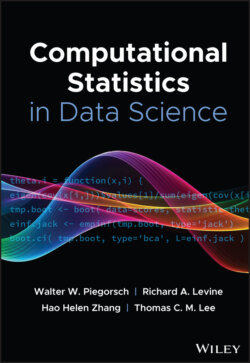Читать книгу Computational Statistics in Data Science - Группа авторов - Страница 43
2.3 SAS®
ОглавлениеSAS was born during the late 1960s, within the Department of Experimental Statistics at North Carolina State University. As the software developed, the SAS Institute was formed in 1976. Since its infancy, SAS has evolved into an integrated system for data analysis and exploration. The SAS system has been used in numerous business areas and academic institutions worldwide.
SAS provides packages to support various data analytic tasks. The SAS/STAT component contains capabilities one normally associates with data analysis. SAS/STAT supports analysis of variance (ANOVA), regression, categorical data analysis, multivariate analysis, survival analysis, psychometric analysis, cluster analysis, and nonparametric analysis. The SAS/INSIGHT package implements visualization strategies. Visualizations can be linked across multiple windows to uncover trends, spot outliers, and readily discern subtle patterns. Finally, SAS provides the user with a matrix‐programming language via the SAS/IML system. The matrix‐based language allows custom statistical algorithm development.
Recently, SAS's popularity has diminished [4]; yet, it remains widely used. Open‐source competitors threaten SAS's previous overall market dominance. Rather than complete removal, we see SAS becoming a niche product in the future. Now, however, SAS expertise remains desired in certain roles and industries.
